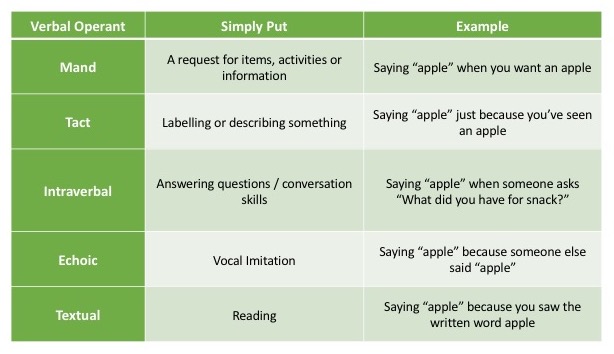Verbal Behavior (VB)
Here at ASCEND, our approach on ABA places an emphasis on Verbal Behavior (VB). VB treats language as a type of behavior and can be analyzed by the principles of behavior. Research has shown that verbal behavior benefits language acquisition, which in turn enhances the use of language in social situations.
In VB, one major part of the initial program consists of teaching the child to request items, activities and information regarding their environment. By doing so, we teach the child that using language is valuable to them as this will lead them to what he/she wants or needs. Meanwhile, we also uses Verbal Behavior to teach that words can have different functions (e.g. purposes or aims). In turn, this will help in developing communication skills, increasing the opportunities for them to socialize with other people. By communication skills, we mean that students can use language flexibly and appropriately in different situations. Moreover, we aim to mimic natural conversation and learning by mixing different tasks. This is to prepare the learners’ ability to learn from the natural environment.
As mentioned earlier, when a child utters a word, the word may have different functions. Even though Bob said “apple”, it doesn’t necessarily mean that he wants apple (see below for the different functions of expressive words). Sometimes, you may hear a child who can “parrot” a lot of words and even sentences, but it seems like he is not really using these words in communication or in a functional way. Therefore, VBr addresses these issues and teaches a learner to use the word in different functional ways depending on the context.

The following conversation between a therapist and a child illustrates how we use different functions of words (verbal operants) in everyday life. Through learning the different functions of words, a child can then fully utilize their language.
Therapist: (reading a book which has a picture of an apple tree) Oh John, look what’s that on the tree?
John: apples
Therapist: That’s right. Those are apples. I see there is a basket full of apples on the grass too. Can you see it?
John: (pointing at the apples) There!
Therapist: You’re fast! There are red apples and green apples.
John: red apples and green apples
Therapist: John, What can we do with apples?
John: We can eat them.
Therapist: Great! We can also cook them and make desserts with them. Let’s see… should we make apple pie or apple juice?
John: Apple Pie. Can I have apple pie for dessert tonight please?
